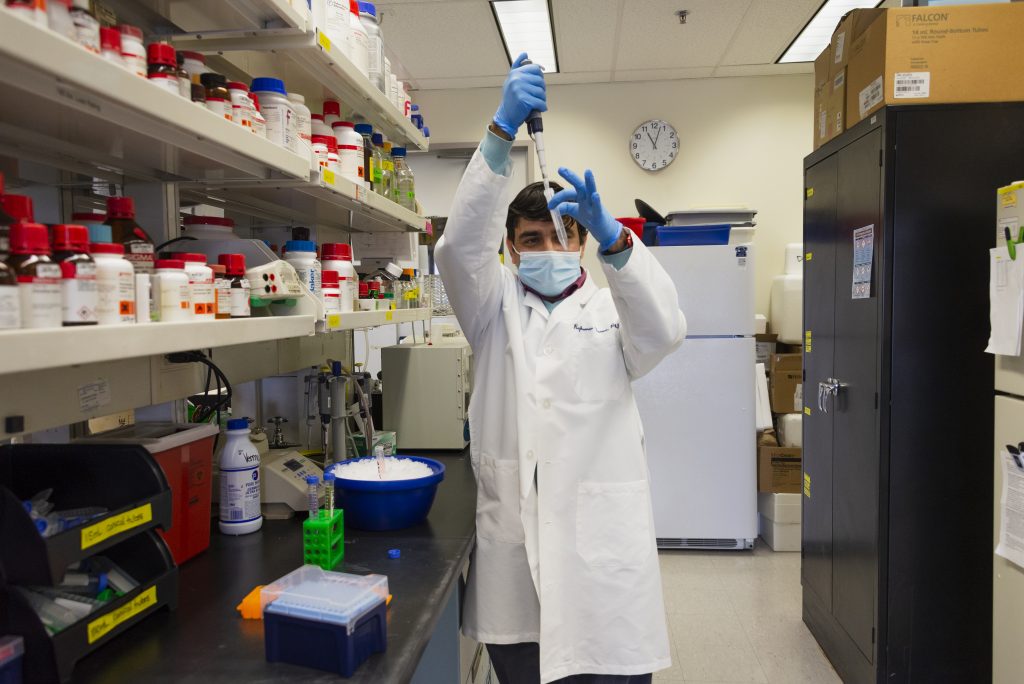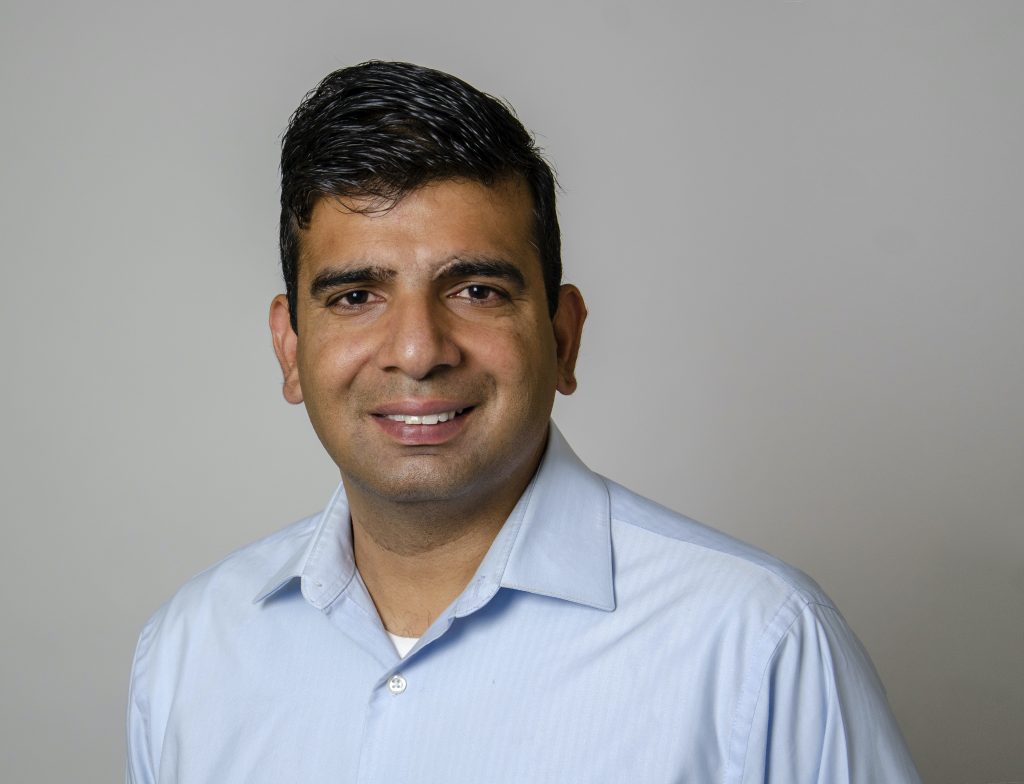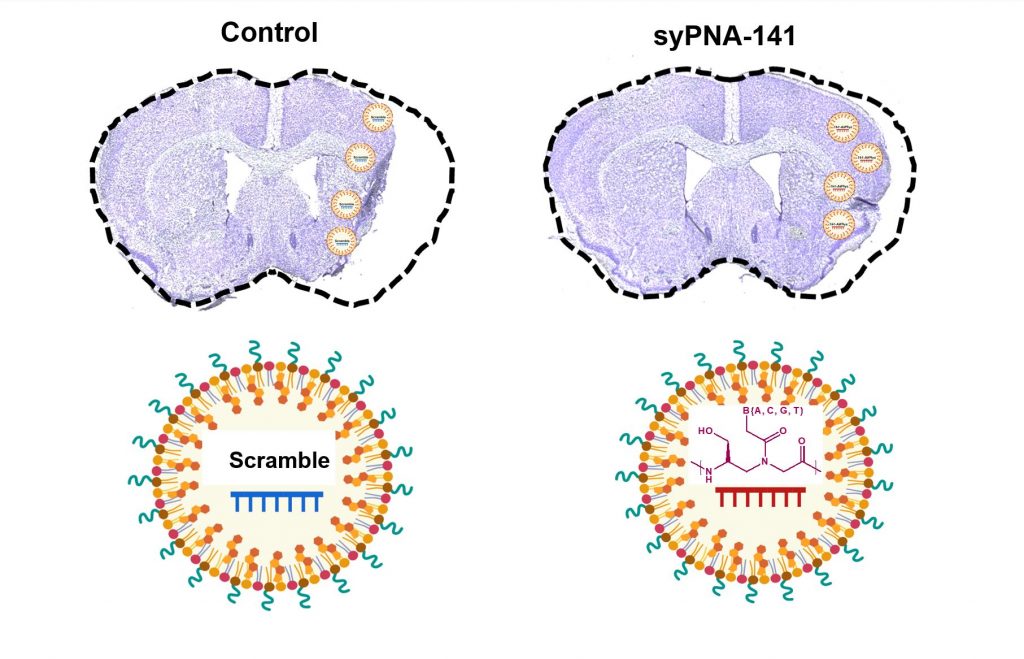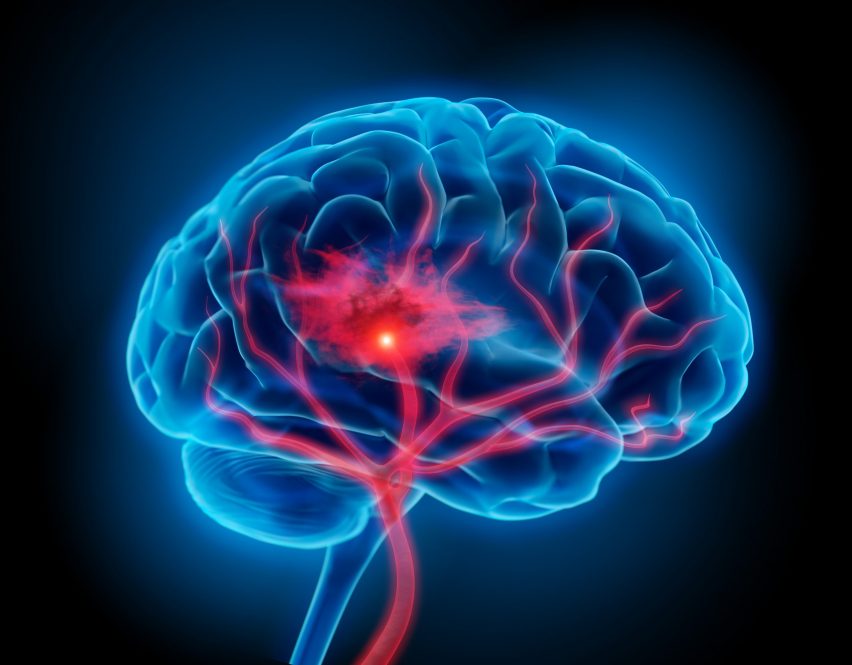It’s been more than three decades, but still there are only two treatments for a stroke: either rapid use of a clot-busting medication called tPA or surgical removal of a clot from the brain with mechanical thrombectomy. However, only 5% to 13% percent of stroke cases are actually eligible for these interventions.

“We need to be persistent with our research to find a new therapy for stroke,” says Rajkumar Verma, M.Pharm., Ph.D., assistant professor, Department of Neuroscience at UConn School of Medicine working in cross-campus collaboration with Professor Raman Bahal Ph.D. of the Department of Pharmaceutical Sciences in the UConn School of Pharmacy. “Stroke research is hard and challenging to do. But without trying we won’t make progress. We need to keep trying. UConn is determined to keep trying.”
In addition to being life-threatening, stroke is the major cause of long-term disability worldwide.

“When a stroke strikes a patient, we don’t have any treatment to offer to effectively repair the brain’s damage. Once brain cells and tissue are damaged by a stroke, nothing can help restore the damage. In essence, the cascading inflammation caused by a stroke in the brain is like a fire in a house. We need to find a way to stop stroke’s fire,” says Verma.
Verma and his multidisciplinary research team believe they have found a new innovative therapy to try to stop a stroke’s “fire” or inflammation. This October they reported their new findings in the journal Molecular Therapy: Nucleic Acid.
To try to more effectively control a stroke’s damage and turn back time, UConn researchers are leveraging the power of micro-RNA (MiRNA), small molecules that regulate protein expression inside cells as they are able to control multiple proteins at a time.
“MiRNAs are small RNA molecules that help cells to regulate multiple gene and protein expression,” says Verma. “UConn researchers discovered that during a stroke these MiRNA get dysregulated, thus leading to brain damage by multiple unchecked proteins. Also, our laboratory research has confirmed the presence of increased levels of one such MiRNA, known as miRNA-141-3p, in blood samples of stroke patients.”

Verma adds, “We are thrilled to report that we have successfully tested a novel MiRNA-141-3p inhibitor synthesized in our collaborator Dr. Bahal’s lab with the ability to reduce stroke damage and extinguish spreading inflammatory fire in the brain. In mouse models, we have seen swift restoration of once-lost motor function and memory. Also, we see a decrease in brain injury and enhanced expression of neuroprotective genes and growth factors fueling the brain’s recovery from stroke.”
The new promising therapeutic modality developed to inhibit stroke is called anti-miR-141-3p. UConn’s medical school is currently working to commercialize the discovery and take it toward clinical trial testing as a future treatment option for stroke.
Verma says UConn’s research findings once again showcase the powerful tool of miRNA and the promise of their newly developed miRNA inhibitor’s ability to stop the overexpression of dangerous, dysregulated bad proteins causing inflammation in the brain post-stroke.
Verma came to the U.S. over a decade ago from India and continued his stroke research journey at UConn School of Medicine studying stroke.
“I saw the big therapeutic gap in a new drug treatment for stroke to mitigate its brain damage and help with post-stroke recovery, and was motivated to try to fill this gap by learning more about stroke and by performing more translational research. I have chosen to stay at UConn for my stroke research, as UConn excels at this.”
But Verma is also driven to fight stroke personally.
“So many people have a personal story or family member who has been personally impacted about stroke – including me,” Verma shares. “My father died from a cardiovascular incident. We are not sure if it was in the brain or the heart. But this experience has led to my motivation for pursuing more stroke research.”



